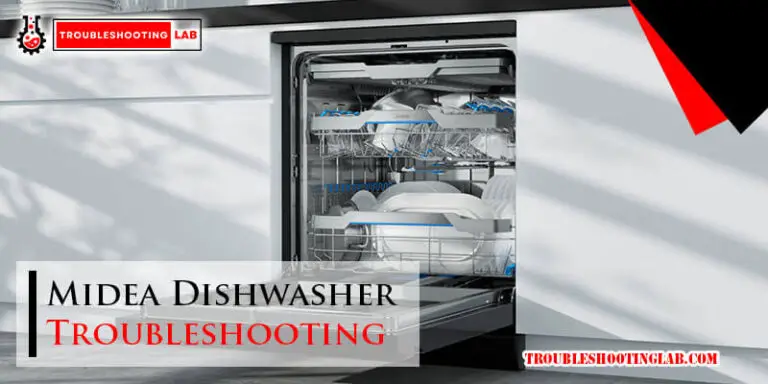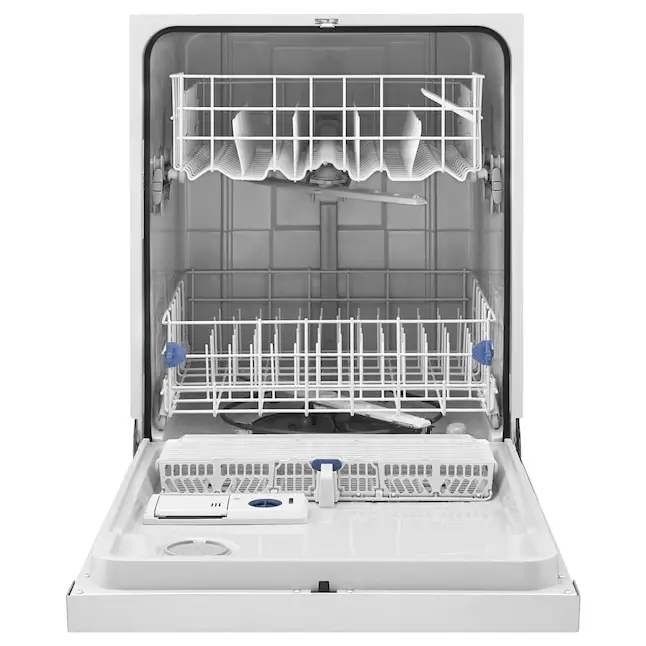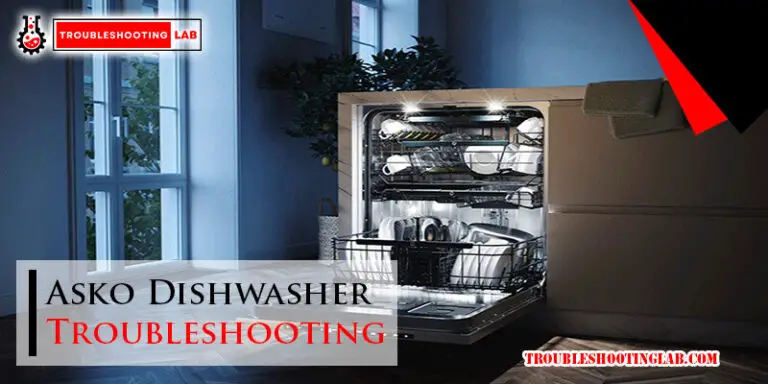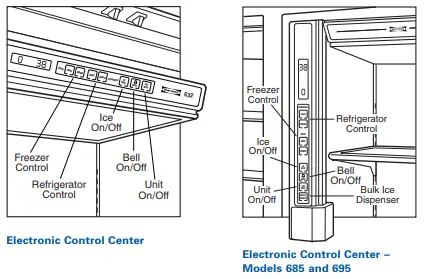Thermador Refrigerator Troubleshooting: Quick Fix Guide
Is your Thermador refrigerator giving you trouble? You’re not alone.
A malfunctioning fridge can quickly turn into a major headache, especially when your food is at risk of spoiling. But before you call in a repair technician or start shopping for a new appliance, take a deep breath. You might be able to fix the issue yourself with a little guidance.
We’ll walk you through common Thermador refrigerator problems and simple troubleshooting steps you can try at home. Whether your fridge isn’t cooling, making strange noises, or showing error codes, you’ll find practical solutions to get it back on track. Stick around—you could save yourself time, money, and stress by learning exactly what to do next.
Common Issues
Thermador refrigerators are a modern kitchen staple, blending style with advanced cooling technology. But even the best appliances can run into issues. Knowing how to troubleshoot common problems can save you time, money, and frustration. Let’s break down some frequent challenges and what you can do to fix them.
Refrigerator Not Cooling
Is your Thermador refrigerator struggling to keep things cold? Start by checking the temperature settings. Sometimes, they can be accidentally adjusted, especially if kids are around.
Next, inspect the condenser coils. Dust and debris buildup can block airflow, making your fridge work harder. Clean them gently with a vacuum or a soft brush.
Still not cooling? A faulty door seal might be the culprit. Close the door on a thin piece of paper. If it slides out easily, you might need to replace the gasket.
Water Dispenser Malfunction
If your water dispenser isn’t working, it could be due to a clogged water filter. Filters need replacing every six months. When was the last time you changed yours?
Another common cause is air trapped in the water line. Try pressing the dispenser lever for a few minutes to release any air.
If these don’t help, inspect the water supply line for kinks or leaks. A simple adjustment might restore your dispenser to full functionality.
Ice Maker Problems
Ice makers are a luxury—until they stop working. Start by checking if the ice maker is turned on. Sounds obvious, but it happens more often than you’d think.
Inspect the ice tray. Sometimes, ice can clog the mechanism. Remove any stuck cubes and reset the ice maker.
If the problem persists, the water inlet valve might be blocked. Ensure it’s open and water is flowing freely.
Unusual Noises
Is your refrigerator making strange sounds? Some noise is normal, like humming or soft clicking. But loud buzzing or rattling is usually a sign of trouble.
Check if the fridge is level. Uneven placement can cause vibrations. Adjust the feet to stabilize it.
Another possibility is a loose fan blade or motor issue. If you’re comfortable, remove the back panel and inspect the fan for obstructions. If unsure, call a professional to avoid further damage.
Every problem has a solution. A little troubleshooting can go a long way in keeping your Thermador refrigerator running smoothly. What’s the most challenging issue you’ve faced with your fridge? Share your experience in the comments below!
Quick Fixes For Cooling Problems
Is your Thermador refrigerator struggling to keep your food cold? Cooling problems can be frustrating, especially when you’re trying to avoid food spoilage. The good news is that many cooling issues can be resolved quickly with a few simple checks. Let’s dive into practical fixes that might save you from calling a repair technician.
Checking Temperature Settings
Start by inspecting your refrigerator’s temperature settings. Sometimes, accidental adjustments can throw the cooling off balance.
- Make sure the fridge temperature is set between 37°F and 40°F, while the freezer should be at 0°F.
- Use a thermometer if your appliance doesn’t display the exact temperature.
- If the settings seem correct but cooling is still off, try resetting the thermostat. Some models have a reset button for this purpose.
Have you ever accidentally bumped into the controls while cleaning the fridge? It’s a common mistake, and a quick check can make all the difference.
Cleaning The Condenser Coils
Dirty condenser coils can be a sneaky culprit behind cooling problems. These coils help release heat, but dust and debris can block them over time.
- Locate the coils—usually found at the back or underneath your refrigerator.
- Unplug the fridge for safety before cleaning.
- Use a vacuum cleaner with a brush attachment or a coil-cleaning brush to remove dirt and lint.
Even if you clean your kitchen regularly, the coils are easy to overlook. Set a reminder to clean them every six months for optimal performance.
Inspecting Door Seals
A poor seal can let cold air escape, making it hard for your fridge to maintain the right temperature. Inspect the rubber gaskets on the fridge door closely.
- Run your fingers along the seals to check for cracks, tears, or wear.
- Close the door on a dollar bill and try pulling it out. If it slides out easily, your seal might need replacing.
- Clean the seals with warm, soapy water to remove dirt that could prevent a proper seal.
Have you noticed your fridge door doesn’t close firmly? A weak seal could be costing you more in energy bills than you realize.
Cooling issues don’t always mean you need professional help. A few simple checks can often solve the problem, saving time and money. Which fix are you planning to try first?
Water Dispenser Troubleshooting
A malfunctioning water dispenser on your Thermador refrigerator can be a frustrating issue. Whether it’s not dispensing water at all or providing a weak flow, there are a few common problems you can tackle before calling a technician. Let’s break it down step by step to help you get your water dispenser back in working order.
Checking The Water Line
The water line is the first thing you should inspect. A kinked or clogged water line can completely stop water from flowing to the dispenser. Pull your refrigerator slightly away from the wall and check the tubing that connects it to your water supply.
If you notice any kinks, gently straighten them out. For clogs, disconnect the water line and flush it with water to clear any debris. Is your water pressure low? That could also be a culprit. Ensure the water supply valve is fully open for optimal pressure.
Replacing The Water Filter
A dirty or old water filter can restrict water flow, causing a weak or no water output. Most Thermador refrigerators require a filter replacement every six months. When was the last time you swapped yours out?
Locate the filter, usually in the upper-right corner of the fridge or behind the base grille. Twist the old filter out and replace it with a new one, ensuring it’s securely locked in place. After replacing, dispense water for a few minutes to clear any air or residue from the new filter.
Inspecting The Dispenser Switch
Sometimes, the issue lies with the dispenser switch itself. This switch activates the water flow when you press the dispenser paddle. If it’s faulty, you won’t get any water, even if everything else is working fine.
Test the switch by listening for a clicking sound when you press the paddle. No sound? The switch might need replacing. Consult your refrigerator’s manual for instructions or contact a professional if you’re not comfortable handling electrical components.
By tackling these three areas—water line, filter, and dispenser switch—you can often resolve water dispenser issues on your own. What’s the first thing you’ll check on your Thermador refrigerator? Share your experience in the comments below!

Credit: www.assinc.com
Resolving Ice Maker Issues
The ice maker in your Thermador refrigerator plays a crucial role. If it stops working, it can disrupt your daily routine. Troubleshooting ice maker issues is easier than it seems. By addressing common problems, you can restore its functionality efficiently. Below are actionable steps to resolve common ice maker issues.
Ensuring Proper Water Supply
A consistent water supply is essential for your ice maker to work. Check if the water valve is fully open. Inspect the water line for kinks or clogs. Use a flashlight to look for any visible damage in the hose. Replace the water filter if it is clogged or outdated. A clogged filter can restrict water flow, affecting ice production. Make sure the refrigerator’s water pressure meets the manufacturer’s recommendations.
Defrosting Frozen Water Lines
Frozen water lines can block water from reaching the ice maker. To fix this, unplug your refrigerator for safety. Locate the water line and examine it for frost buildup. Use a hairdryer on a low setting to gently thaw the frozen line. Avoid using sharp objects to break the ice, as it can damage the line. Once thawed, reconnect power to the refrigerator and test the ice maker.
Testing The Ice Maker Motor
The ice maker motor powers the mechanism that dispenses ice. A faulty motor can stop the ice maker from working. To test it, turn off the refrigerator and remove the ice maker unit. Inspect the motor for visible damage or wear. Use a multimeter to check if the motor is receiving power. If it’s not functioning, consider replacing it with a compatible part. Always consult your user manual for specific instructions.
Addressing Noise Concerns
A noisy refrigerator can be frustrating, especially when it disrupts the peace of your home. Thermador refrigerators are known for their quality, but even the best appliances can develop noise issues over time. The good news is, most noise problems can be solved with a few simple adjustments or inspections.
Identifying The Source Of Noise
Before jumping into fixes, pinpoint where the noise is coming from. Is it coming from the back of the unit, inside the fridge, or the bottom? Listen closely and pay attention to the type of sound—whether it’s a hum, rattle, or vibration.
Sometimes, a rattling noise might just be a loose item inside the fridge, like a jar or container that’s vibrating against the shelf. Remove and rearrange items to see if the noise stops. If the sound persists, it’s time to investigate mechanical components.
Adjusting The Refrigerator Level
Uneven leveling can lead to vibrations and extra noise. Check if your refrigerator is sitting flat on the floor. Place a bubble level tool on top of the fridge to measure its balance.
If it’s tilted, adjust the leveling legs at the bottom of the unit. Turn them clockwise or counterclockwise to stabilize the refrigerator. A properly leveled fridge not only reduces noise but also ensures optimal cooling performance.
Inspecting The Evaporator Fan
The evaporator fan circulates cold air inside your refrigerator. If it’s faulty or obstructed, it can create unusual noises. To check it, unplug the refrigerator and carefully remove the panel covering the fan (usually in the freezer compartment).
Look for debris or ice buildup around the fan blades. Clean them gently and ensure the fan spins freely. If the noise persists, the fan motor may need replacement—a task best left to a professional technician.
Addressing noise concerns doesn’t have to be complicated. By tackling these common issues, you’ll restore peace in your kitchen without breaking a sweat. Have you tried any of these fixes already? Share your experience in the comments!
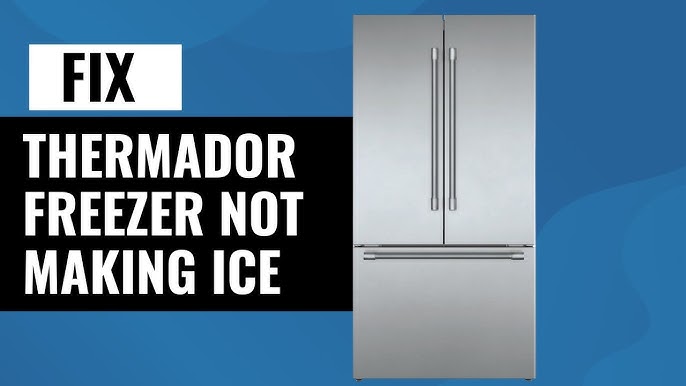
Credit: www.youtube.com
When To Call A Professional
Refrigerators are the heart of your kitchen, but when your Thermador refrigerator starts acting up, it can throw your entire routine off balance. While some minor issues like temperature adjustments or cleaning a clogged drain can be handled with DIY fixes, there are times when you should step back and let a professional take over. Knowing when to call for help can save you from more expensive repairs or even a complete appliance replacement.
Signs Of Major Repairs
Not all refrigerator problems are created equal. Some are clear indicators of a deeper issue that needs expert attention. Is your fridge making loud, unusual noises even after leveling it? This could mean a faulty compressor or motor fan, which are not DIY repairs.
Frequent cooling issues, like inconsistent temperatures or food spoiling quickly, might signal a failing evaporator coil or refrigerant leak. These parts require specialized tools and knowledge to handle properly. If your fridge is leaking water despite cleaning the drainage hole, it’s time to call a technician to inspect the water line or defrost system.
Electrical issues, such as flickering lights or the unit failing to power on, are another red flag. Attempting to fix electrical components on your own can be dangerous. Would you risk your safety or the health of your appliance?
Warranty And Service Options
Before picking up the phone, check if your Thermador refrigerator is still under warranty. Many newer models come with extended warranties covering parts and labor for specific components. Trying to fix the issue yourself could void this coverage. Why pay out of pocket when you might be covered?
If your warranty has expired, Thermador still offers authorized service options. Certified technicians have access to genuine parts and follow brand-specific repair guidelines. This ensures your appliance is fixed correctly, reducing the likelihood of future problems.
Some issues, like refrigerant leaks or compressor failures, may qualify for partial coverage even after the standard warranty ends. It’s worth contacting Thermador’s customer service to explore your options before committing to a repair.
Knowing when to call a professional isn’t just about fixing the issue—it’s about protecting your investment. When in doubt, always err on the side of caution and consult a certified technician for advice.
Maintenance Tips
Keeping your Thermador refrigerator in top-notch condition doesn’t have to be a hassle. With some simple maintenance tips, you can extend its lifespan and ensure it performs efficiently. Whether it’s cleaning, replacing filters, or keeping an eye on its performance, small efforts can make a big difference. Let’s dive into the practical steps you can take to keep your refrigerator running like new.
Regular Cleaning Schedule
A clean refrigerator isn’t just about aesthetics—it affects how efficiently it operates. Dust and debris can gather on the condenser coils, making the unit work harder than it should. This not only impacts performance but also increases energy consumption.
Set up a monthly cleaning routine. Use a soft brush or vacuum to remove dirt from the coils, typically located at the back or bottom of the fridge. Don’t forget to wipe down the shelves and drawers with warm, soapy water. It’s quick and keeps odors at bay.
Have you ever noticed sticky spills in hard-to-reach corners? That’s a breeding ground for bacteria. A little effort to clean those spots can go a long way in preserving food safety and freshness.
Replacing Filters On Time
Filters play a key role in keeping your refrigerator functioning efficiently. Whether it’s the water filter or air filter, neglecting replacements can lead to issues like unpleasant smells or reduced water quality.
Check your refrigerator’s manual for the recommended replacement schedule. Usually, water filters need replacing every six months. If you use the water dispenser frequently, consider checking it sooner. Air filters, on the other hand, might last up to a year.
Ever wondered why your ice tastes funny? It might be time to replace the water filter. Staying proactive about this simple task can save you from bigger headaches down the road.
Monitoring Performance
Pay attention to how your refrigerator is running. Is it cooling unevenly? Are the temperatures fluctuating? These are early warning signs of potential problems.
Place a thermometer inside the fridge and freezer to ensure they stay within the ideal range. For the fridge, aim for 37°F (3°C), and for the freezer, 0°F (-18°C). If the temperature is off, adjust the settings and monitor closely.
Do you hear unusual noises? A loud hum or clicking sound could mean something needs attention. Act quickly to troubleshoot and avoid costly repairs.
By taking these small but impactful steps, you’re not just maintaining your refrigerator—you’re protecting your food and wallet. What’s your go-to tip for keeping appliances in great shape? Share your thoughts below!
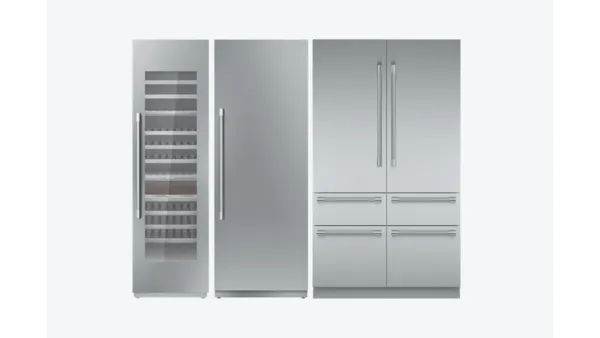
Credit: www.thermador.com
Conclusion
Troubleshooting your Thermador refrigerator doesn’t have to feel overwhelming. Start with simple checks like power supply and temperature settings. Clean the condenser coils and inspect door seals for damage. Address unusual noises or leaks quickly to prevent bigger problems. Regular maintenance can keep your fridge running smoothly for years.
If issues persist, contact a professional technician for help. Always prioritize safety while handling repairs. A well-maintained refrigerator saves time, energy, and money. By following these tips, you’ll ensure your appliance stays reliable and efficient.

